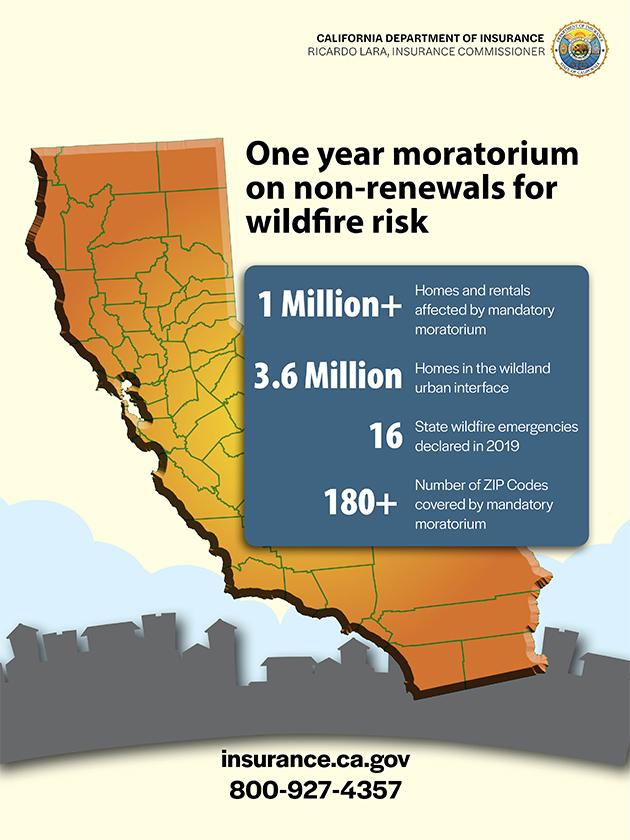As California continues to grapple with increasingly severe wildfire seasons, the future of fire insurance coverage has become a critical issue for residents, businesses, and policymakers alike. In San Diego, a region particularly vulnerable to devastating fires, insurers are reassessing risk models and coverage options in response to shifting climate patterns and regulatory changes. This article explores the evolving landscape of fire coverage in California, examining the challenges facing the insurance industry and the innovative strategies being developed to protect homeowners and commercial entities in one of the nation’s most fire-prone areas.
The Rising Cost of Wildfire Insurance in California
California homeowners are facing unprecedented hikes in wildfire insurance premiums, driven by increasing claims and the escalating frequency of devastating fires. Insurers have tightened their risk models, leading to higher costs and more selective underwriting practices across the state. This trend is impacting not only individual homeowners but also local businesses and the broader real estate market, raising concerns about affordability and coverage availability in high-risk zones.
Key factors influencing insurance cost surges include:
- Rising property values in wildfire-prone areas
- Increased frequency and severity of wildfires
- Greater building reconstruction expenses
- Decreased insurer participation in high-risk regions
| Year | Average Premium Increase | Number of Wildfire Claims |
|---|---|---|
| 2020 | 15% | 12,000 |
| 2021 | 25% | 18,500 |
| 2022 | 30% | 22,000 |
| 2023 | 35% | 28,000 |
Innovative Technologies Shaping Fire Risk Assessment
Emerging fire risk assessment tools are revolutionizing the way insurers and local agencies evaluate wildfire threats across California. Leveraging advanced satellite imagery alongside AI-driven predictive models, stakeholders can now pinpoint vulnerable zones with unprecedented accuracy. These technologies analyze vegetation density, historical fire data, and real-time weather conditions, enabling rapid risk recalibration. This dynamic approach significantly reduces dependency on outdated static maps, allowing for tailored, location-specific fire strategies.
Among the most impactful innovations are remote sensing devices and machine learning algorithms that continuously monitor changes in environmental variables. Early detection systems utilize these tools to alert communities and insurance companies alike, while blockchain-based platforms ensure transparent data sharing and claim processing. The integration of these technologies empowers a proactive fire management ecosystem, fostering collaboration between public safety agencies, insurers, and residents.
- Satellite Remote Sensing: Real-time vegetation and moisture monitoring
- AI-Predictive Modeling: Forecasting fire spread and impact
- Blockchain Integration: Secure and transparent data exchange
- IoT Sensor Networks: Early detection and environmental monitoring
| Technology | Function | Impact on Fire Risk |
|---|---|---|
| AI-Predictive Models | Forecast wildfire behavior | Improves accuracy of risk zones |
| Satellite Imagery | Vegetation and moisture analysis | Enables real-time monitoring |
| IoT Sensors | Environmental and smoke detection | Enables early warnings |
| Blockchain Platforms | Data sharing and claims processing | Enhances transparency and speed |
Policy Reforms and Regulatory Changes Impacting Coverage
California’s legislature has introduced a series of transformative measures aimed at addressing the escalating wildfire crisis, reshaping the landscape of fire insurance coverage. Key initiatives include stronger enforcement of building codes, incentivized use of fire-resistant materials, and mandatory risk assessments for insurers. These regulations seek to balance the growing financial burden on insurance providers with the crucial need to maintain access to coverage for vulnerable homeowners and businesses in high-risk areas.
- Enhanced Risk Mitigation Requirements: Insurers must now verify compliance with updated wildfire prevention standards before issuing or renewing policies.
- Expanded Use of Technology: Proposals support integrating satellite data and AI-driven risk modeling to better assess coverage eligibility and pricing.
- State-backed Reinsurance Programs: To stabilize the market, the state is expanding reinsurance pools designed to absorb losses from catastrophic wildfire events.
| Policy Reform | Impact on Coverage | Implementation Timeline |
|---|---|---|
| Mandatory Risk Disclosure | Increased transparency for policyholders | Q3 2024 |
| Fire-Resistant Construction Standards | Reduced premiums for compliant properties | 2025 |
| Public-Private Reinsurance Expansion | Broader coverage availability | 2024-2026 |
Critics express concern about potential premium hikes and policy exclusions disproportionately affecting low-income residents and small business owners. In response, advocacy groups and regulators are exploring subsidized insurance options and community-based wildfire prevention programs to foster resilience without sacrificing affordability. The coming years will test the effectiveness of these balanced approaches as California seeks to safeguard its residents while revitalizing its fire insurance market.
Strategies for Businesses to Mitigate Fire Insurance Challenges
Businesses in California must adopt proactive measures to address escalating fire insurance challenges. Incorporating advanced risk mitigation tactics, such as upgrading fire suppression systems and implementing comprehensive emergency response plans, can significantly influence underwriting decisions and premium costs. Moreover, fostering strong relationships with insurance carriers by maintaining transparent communication about safety upgrades can position companies favorably during policy negotiations.
- Invest in fire-resistant building materials to enhance property resilience.
- Regularly conduct fire safety training for all employees to minimize operational risks.
- Leverage technology, including AI and IoT-enabled sensors, for early fire detection and monitoring.
- Engage with community wildfire prevention programs to stay informed and prepared.
| Strategy | Potential Benefit | Implementation Cost |
|---|---|---|
| Fire-Resistant Roofing | Reduces spread of fire damage | Moderate |
| Automated Sprinkler Systems | Immediate fire suppression | High |
| Employee Fire Drills | Improved evacuation safety | Low |
| Real-Time Monitoring Sensors | Early fire detection | Medium |
In Conclusion
As California continues to grapple with the increasing threat of wildfires, the future of fire coverage remains a critical issue for residents, businesses, and insurers alike. Innovations in technology, evolving regulatory frameworks, and proactive community engagement are shaping a new landscape for risk management and insurance solutions. For stakeholders in San Diego and across the state, staying informed and adaptable will be essential in navigating these challenges. The coming years will be pivotal in determining how effectively California can protect its communities and economies from the devastating impact of wildfires.







